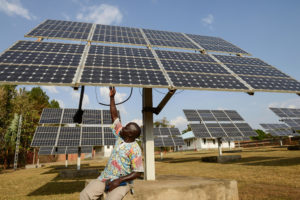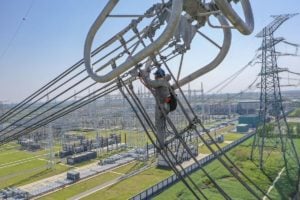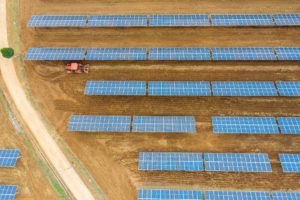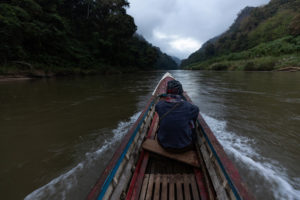China’s commitment to supporting Africa’s green and low-carbon energy transition was a highlight of the 8th Forum on China-Africa Cooperation (FOCAC), which concluded on 30 November last year with a climate joint declaration.
The Declaration on China-Africa Cooperation on Combatting Climate Change is formed of broad brushstrokes but provides the shape of future partnership in the energy sector. On coal, it reaffirms President Xi Jinping’s pledge, made at the UN General Assembly in September, to stop building new coal-fired power projects abroad, a move that was welcomed by more than 120 African community organisations and NGOs.
On clean energy, it includes a commitment from China to further increase investment in solar, wind and other renewables in Africa. The acceleration of Chinese support for solar and wind was also mentioned in Xi’s opening keynote and the Vision 2035 document, which was released at the forum.
Controversially, the Declaration states that “the two sides support qualified gas-to-power projects in accessing green investment and financing support”, though it remains unclear how China will scale financing and investment for natural gas and renewables in Africa.
A call for innovative financing
Over the past two decades, Chinese financing and investment in solar and wind projects have been far smaller in Africa than in hydropower and fossil fuels. However, China’s pledge to stop investing in overseas coal could open up a space for solar and wind power to meet Africa’s growing energy demand.
A recent report by the African Climate Foundation, the Institute of Development Studies and the Open University calls for “innovative solutions” to accelerate China’s clean energy investment in Africa and diversify from traditional policy bank financing underwritten by Sinosure. This model favours large-scale hydro and fossil fuel projects and has deepened debt distress in host countries to some degree.
The FOCAC Dakar Action Plan (2022-2024), released together with the Declaration, alludes to a similar uptake of “innovative ways of financing”. It calls on institutional investors and (sub-)regional development finance institutions, such as the African Development Bank, to step in. It welcomes “the issuance of panda bond by eligible African sovereign, multilateral and financial institutions in the Chinese bond market”.
Green panda bond and its envisaged mutual benefits
A panda bond is a renminbi-denominated bond issued in mainland China by a foreign entity such as a sovereign or local government, multilateral development institution, financial institution or non-financial enterprise. Green panda bonds are those whose proceeds are earmarked for green assets or projects, in accordance with China’s 2021 green taxonomy and other documents.
Issuing panda bonds, green or not, allows foreign issuers to tap into the deep and diversified investor base of China’s onshore bond market (that is, the China Interbank Bond Market and the exchange bond markets). International investors can participate through the “Bond Connect” regime launched in 2017.
The New Development Bank and the African Development Bank are arguably more suitable than African countries as issuers of green panda bonds
Since its debut in 2005, the panda bond has been slowly gaining traction among foreign borrowers looking to diversify their financing channels and provide possible access to low-cost capital. The panda bond has become increasingly attractive due to the gradual internationalisation of the renminbi. South Korea became the first foreign sovereign panda bond issuer in 2015, followed by other countries signed up to the Belt and Road Initiative, such as Poland, Hungary and Portugal.
The first green panda bond was issued in 2016 by the New Development Bank, a multilateral development bank established by the BRICS states (Brazil, Russia, India, China and South Africa). The five-year bond, with a coupon of 3.07%, raised 3 billion yuan (US$448 million) in China’s onshore bond market to support infrastructure and sustainable development projects in BRICS countries. Hungary recently issued the first green sovereign panda bond for 1 billion yuan ($157 million).
What is a coupon rate?
The annual income an investor can expect to receive while holding a particular bond.
In the context of financing energy transitions in Africa, multilateral development banks such as the New Development Bank and the African Development Bank are arguably more suitable than African countries as potential green panda bond issuers. They benefit from robust credit ratings whereas several African countries received harsh credit downgrades in the wake of Covid-19.
Mutual benefits can be envisaged through the potential issuance of green panda bonds by multilateral development banks with an Africa focus. For African countries, it helps raise the capitalisation of their development banks to enable lending towards eligible green assets and projects; a portion of the proceeds can potentially be structured to repay some of the outstanding debt obligations to China.
For China, domestic institutional investors, such as insurance companies, and possibly some retail investors, can tap into overseas green assets and projects. With further credit enhancement effects from multilateral development banks’ participation, current creditors can seek comfort in knowing about the slightly strengthened debt sustainability on the continent.
Nigeria and the African Development Bank reportedly considered China’s onshore bond market in 2016 and 2018, respectively. However, to date, neither have successfully issued any forms of panda bond. A potential issuance is made more likely under the FOCAC Dakar Action Plan.
Will natural gas be eligible for green panda bonds?
Successful cooperation on green bonds or through any green finance instrument requires a common understanding of what constitutes “green”. While the China-Africa Declaration allows gas projects to access green investment and finance support, the classification of activities as part of green finance taxonomies has become highly contested globally over the inclusion of gas and nuclear.
A green panda bond has to comply with China’s green taxonomy, known as the Green Bond Endorsed Projects Catalogue, which does not include natural gas extraction and construction or operation of conventional gas-fired power plants. (However, natural gas combined cooling, heating and power generation remain eligible under certain conditions, as do natural gas transmission and storage.)
South Africa, an early adopter of green finance, has removed “production of electricity, heating and cooling from gas” from its latest draft green finance taxonomy, and considers it appropriate to be included in the Transition Taxonomy under development. However, countries such as Nigeria, which currently lack classification systems, are keen to secure Chinese financing and investment to support gas pipelines and gas-fired power plants. “Natural gas doesn’t make sense in every African market. But in many, it is a crucial tool for lifting people out of poverty,” wrote Nigerian Vice President Yemi Osinbajo in an op-ed for Foreign Affairs.
As a side note, the European Commission is now reconsidering whether to include gas and nuclear in the EU sustainable finance taxonomy, which has generally been considered the gold standard. The inclusion of gas could increase European investors’ appetite to explore overseas gas power projects under the label of “green” financing.
However, it is still unclear what the Declaration‘s phase “qualified gas-to-power projects” entails. As a potential reference, the Green Development Guidance for BRI Projects – a traffic light-style environmental impact assessment system – gives a negative rating to gas-fired power generation projects, implying stricter supervision and regulation. That is unless carbon capture, utilisation and storage technology is applied to contain emissions to less than 100g of CO2 equivalent per kilowatt hour.
The Guidance was commissioned by the BRI International Green Development Coalition (BRIGC), a cooperation platform jointly initiated by China’s Ministry of Ecology and Environment and international partners. It is currently only a research deliverable but it has the potential to be adopted by Chinese policymakers as an authoritative policy document. However, the Declaration did not elaborate on whether such mitigation measures would qualify natural gas for “green” finance for projects in Africa.
Looking ahead, green panda bonds will help connect African borrowers with China’s vibrant onshore bond market to access low-cost financing for clean energy projects. As for gas, which does not fit under China’s green taxonomy, clarification awaits from policymakers on how gas power plants can be eligible for any types of “green” financing.









